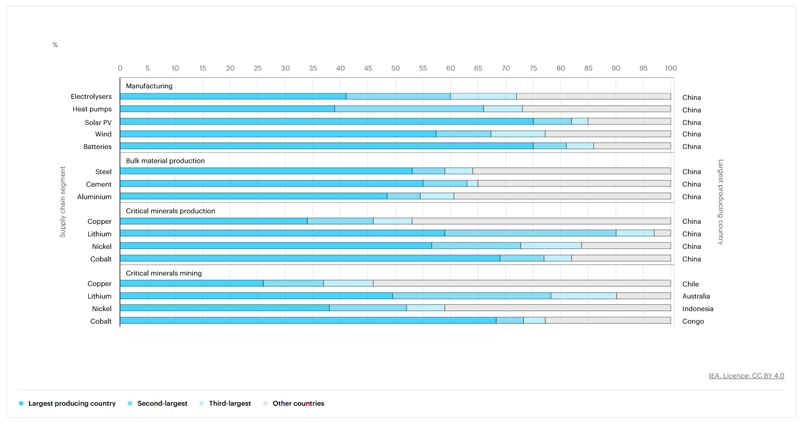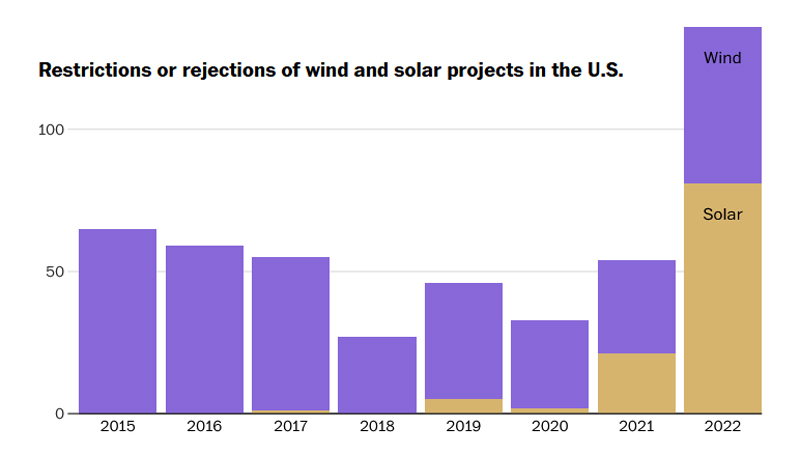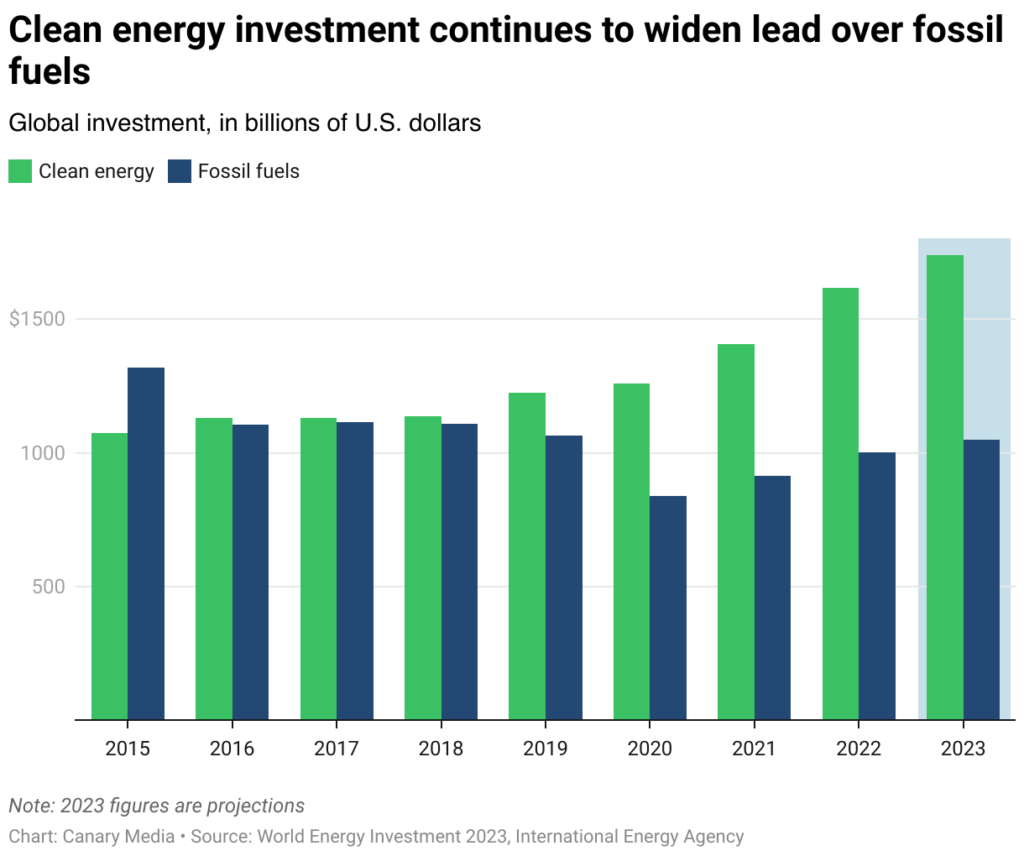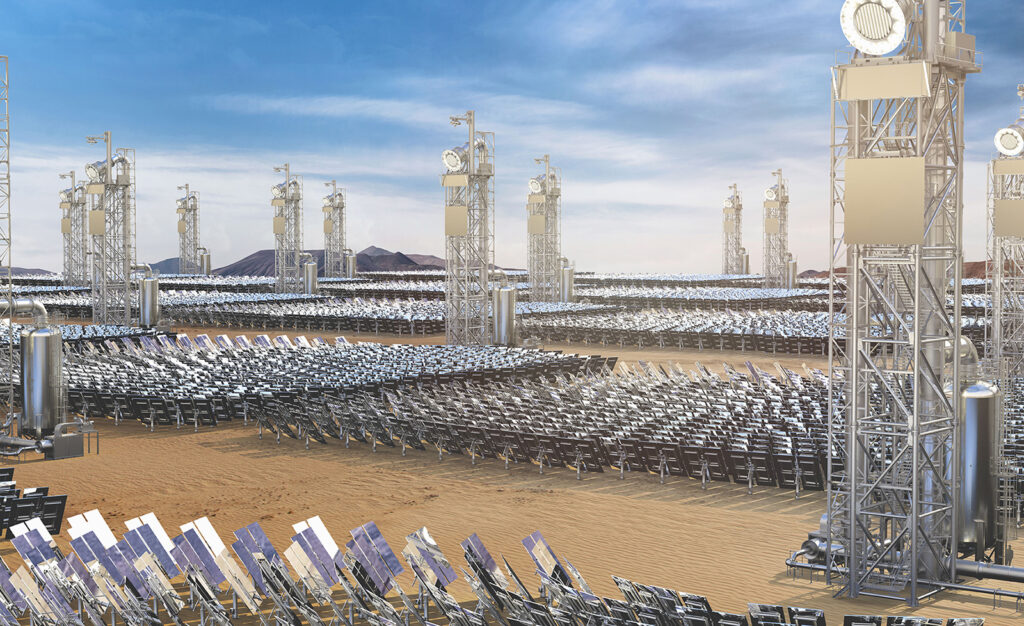CLEAN ENERGY TECHNOLOGY MANUFACTURING
A comprehensive report from the International Energy Agency (IEA) focuses on an often-overlooked aspect of the energy transition – the revolution it promises in clean energy manufacturing. Published in January, the 2023 Energy Technology Perspectives report provides extensive analysis of global clean energy supply chains, identifies key vulnerabilities in these supply chains, and makes recommendations for how to address them.

The report begins, “The energy world is in the early phase of a new industrial age – the age of clean energy technology manufacturing … The current global energy crisis is a pivotal moment for clean energy transitions worldwide, driving a wave of investment that is set to flow into a range of industries over the coming years. In this context, developing secure, resilient and sustainable supply chains for clean energy is vital. Every country needs to identify how it can benefit from the opportunities of the new energy economy, defining its industrial strategy according to its [own]strengths and weaknesses” (emphasis ours).
Complexities and vulnerabilities
The IEA notes that clean energy supply chains are becoming increasingly complex, as the world transitions to a low-carbon future. This complexity is creating new vulnerabilities, which could pose a threat to the energy transition.
These include:
- Mining and materials production: The production of critical minerals, such as lithium, copper, and nickel, is concentrated in a small number of countries. This concentration of production could lead to supply disruptions if these countries were to restrict exports or experience political instability.
- Technology manufacturing and installation: The manufacturing of clean energy technologies, such as solar panels and wind turbines, is also concentrated in a small number of countries. This concentration of manufacturing could lead to supply disruptions if these countries were to experience political instability or trade barriers.
- Enabling infrastructure: The deployment of clean energy technologies requires a significant investment in enabling infrastructure, such as transmission lines and power grids. This investment could be delayed or blocked by regulatory or political barriers.
The IEA then makes a number of recommendations for how to address these vulnerabilities, including:
- Diversifying the sources of critical minerals: Diversifying the sources of critical minerals, by developing new mining projects in other countries.
- Reducing the reliance on imported technologies: Developing domestic manufacturing capacity for clean energy technologies.
- Investing in enabling infrastructure: Investing in enabling infrastructure, such as transmission lines and power grids.
Removing regulatory and political barriers: Removing regulatory and political barriers that could delay or block the deployment of clean energy technologies.
Countries must cooperate
In addition to the key themes mentioned above, the report also highlights the importance of international cooperation in addressing the vulnerabilities in global clean energy supply chains. The IEA notes that each country has its own unique mix of resources and constraints, and that no single country can address these vulnerabilities on its own. Instead, countries must work together to develop and implement policies that will strengthen these supply chains.
The authors conclude: “The story of the new energy economy is still being written – supply chains are central to the narrative Industrial strategies for clean energy technology manufacturing require an all-of-government approach, closely coordinating climate and energy security imperatives with economic opportunities. This will mean identifying and fostering domestic competitive advantages; carrying out comprehensive risk assessments of supply chains; reducing permitting times, including for large infrastructure projects; mobilising investment and financing for key supply chain elements; developing workforce skills in anticipation of future needs; and accelerating innovation in early-stage technologies.”
The full report runs over 400 pages. Read the Executive Summary here.
ROUND-THE-CLOCK CLEAN CLEAN ELECTRICITY AND HEAT
400kWe 247Solar Plants deployed at scale
247Solar Plants™ bridge the gap between conventional wind and solar and the need for round-the-clock utility power and industrial-grade heat. 247Solar Plants store the sun’s energy as heat instead of electricity, for 18 hours or more, at much less than the cost of batteries. No generators are required, and 247Solar’s turbines can also burn a variety of fuels, including hydrogen, to ensure 24/7/365 dispatchability.
Designed for Volume Production
247Solar Plants are pre-engineered modules that use proven technologies for higher reliability, lower technical risk, and easier financing. Our systems s are small enough for villages and light industrial plants, yet they can be combined in any quantity to grow with demand and achieve any required capacity.
- Factory-Built Components: We use standardized, mass-produced components that allow for rapid site assembly, shorter project cycles, and lower costs with volume.
- Local content: Many components of our systems can be manufactured locally for job creation, shorter supply chains, and easier approval of large projects.
- Reliable/Low Maintenance: Simple components, proven technologies, and few moving parts mean high reliability and low maintenance. No on-site operators are required, and local talent can easily operate and maintain our systems.
THOUGHTFUL LAND USE KEY TO ENERGY TRANSITION
 The amount of land required for the United States to reach its renewable energy goals is enormous. The U.S. is a big country with lots of open space, but the requirements and associated obstacles are still daunting. Per a recent article in the Washington Post, a new study by the Nature Conservancy describes two different futures in which the United States achieves net-zero carbon emissions by 2050. “In one future — call it “business as usual” — wind and solar farms are built haphazardly, with little consideration for land impacts. In the other future, developers use land more efficiently.”
The amount of land required for the United States to reach its renewable energy goals is enormous. The U.S. is a big country with lots of open space, but the requirements and associated obstacles are still daunting. Per a recent article in the Washington Post, a new study by the Nature Conservancy describes two different futures in which the United States achieves net-zero carbon emissions by 2050. “In one future — call it “business as usual” — wind and solar farms are built haphazardly, with little consideration for land impacts. In the other future, developers use land more efficiently.”
According to the study, the business-as-usual scenario would require an area around the size of Texas to fit all the solar panels, wind turbines and batteries that would be needed. Yet the authors suggest that the United States could meet 80% of its electricity needs with wind and solar by 2050 by using only 50% of the land that would be required if it only built large-scale solar and wind farms.
The study’s authors recommend a number of strategies for reducing land use for renewable energy, including:
- Building more rooftop solar panels
- Using smaller, distributed solar and wind systems
- Integrating solar and wind with other energy sources, such as hydropower and geothermal
- Using land more efficiently, such as by building solar and wind farms on land that is already being used for other purposes, such as agriculture or forestry
The Post article also highlights another compelling reason for more efficient, thoughtful land use than merely saving space — local opposition — a reason that is likely to apply in other countries as well. In the U.S., “Opposition to solar and wind projects is already stalling development. Last year alone, 136 local governments restricted or rejected solar and wind projects.”
The Nature Conservancy researchers make clear that if renewable energy developers try to build wherever they want, if they ignore the concerns of local citizens, if they fail to offer incentives to nearby towns such as cheaper power and good jobs, the backlash could thwart the renewable energy industry. “Just coming and building a project and assuming the community will be supportive is not going to be an approach that works.”
Read the Post article here.
CLEAN ENERGY INVESTMENT WIDENING LEAD ON FOSSIL FUELS
 Dan McCarthy of Canary Media writes, “This year, the world is projected to invest around $1.7 trillion in clean energy, according to International Energy Agency data released last week — substantially more than the just over $1 trillion expected to pour into fossil fuels.”
Dan McCarthy of Canary Media writes, “This year, the world is projected to invest around $1.7 trillion in clean energy, according to International Energy Agency data released last week — substantially more than the just over $1 trillion expected to pour into fossil fuels.”
Renewables will make up the biggest portion of clean energy spending this year, with solar being a particular driver of the global growth in clean energy investment, expected to beat out expected spending on global oil production for the first time ever.
McCarthy writes, “In total, the amount of money put toward clean energy is expected to jump by nearly 8 percent this year compared to 2022, beating out fossil fuels by its largest-ever margin. Still, that’s not fast enough growth to be on track for the $4 trillion in annual clean energy investment the IEA says the world must achieve by 2030 in order to hit net-zero goals.”
“But,” he concludes, “more concerning for the climate is the persistently high investment in planet-warming fossil fuels. Fossil fuel spending has stabilized around $1 trillion since 2016, down from $1.3 trillion in 2015, but still far from the ideal target: $0.”
FOLLOW & JOIN 247Solar
LinkedIn US, LinkedinEU, Twitter, YouTube
Contact: info@247solar.com
